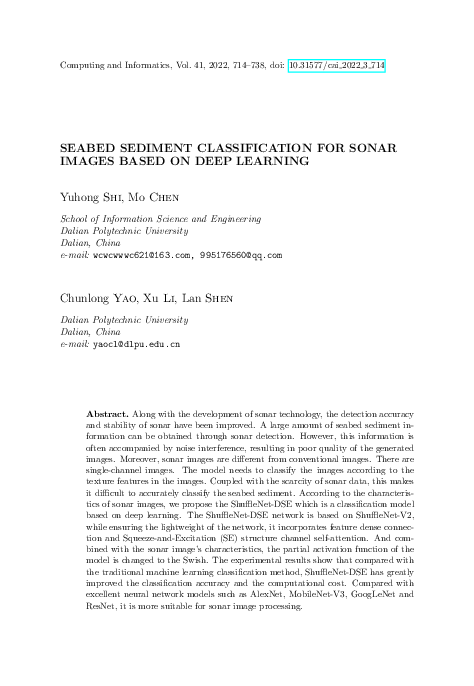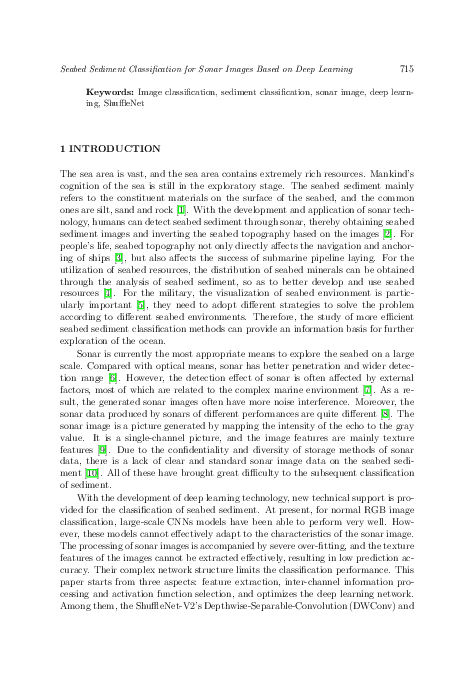Seabed Sediment Classification for Sonar Images Based on Deep Learning
keywords: Image classification, sediment classification, sonar image, deep learning, ShuffleNet
Along with the development of sonar technology, the detection accuracy and stability of sonar have been improved. A large amount of seabed sediment information can be obtained through sonar detection. However, this information is often accompanied by noise interference, resulting in poor quality of the generated images. Moreover, sonar images are different from conventional images. There are single-channel images. The model needs to classify the images according to the texture features in the images. Coupled with the scarcity of sonar data, this makes it difficult to accurately classify the seabed sediment. According to the characteristics of sonar images, we propose the ShuffleNet-DSE which is a classification model based on deep learning. The ShuffleNet-DSE network is based on ShuffleNet-V2, while ensuring the lightweight of the network, it incorporates feature dense connection and Squeeze-and-Excitation (SE) structure channel self-attention. And combined with the sonar image's characteristics, the partial activation function of the model is changed to the Swish. The experimental results show that compared with the traditional machine learning classification method, ShuffleNet-DSE has greatly improved the classification accuracy and the computational cost. Compared with excellent neural network models such as AlexNet, MobileNet-V3, GoogLeNet and ResNet, it is more suitable for sonar image processing.
reference: Vol. 41, 2022, No. 3, pp. 714–738


